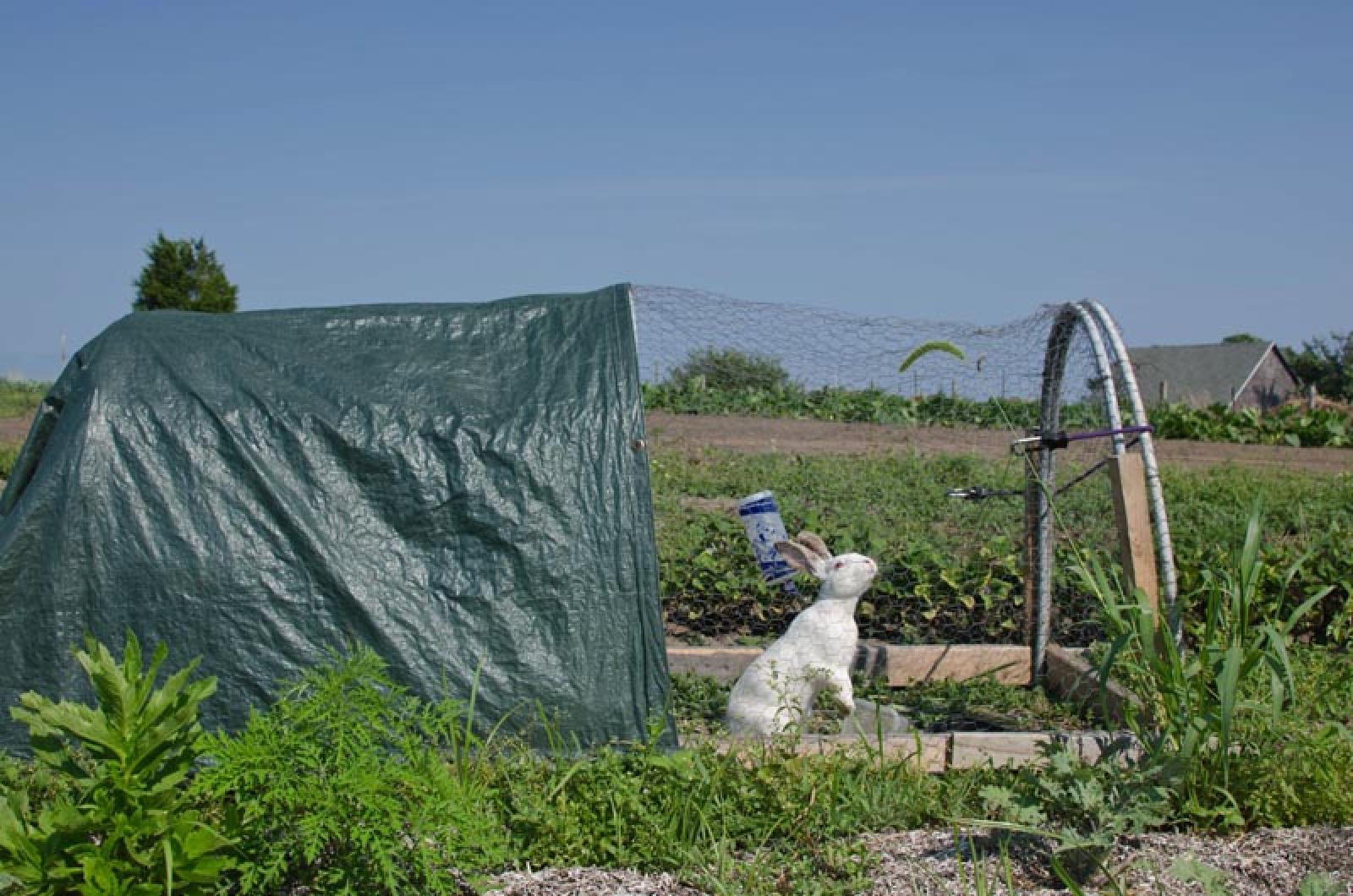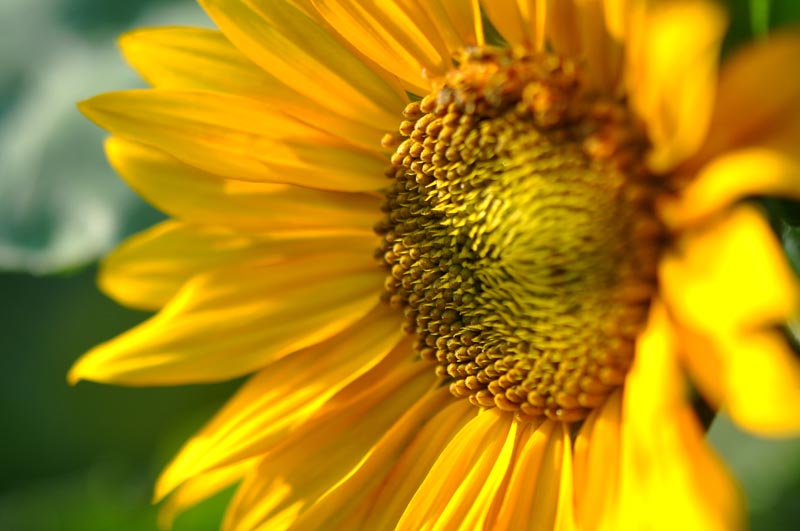Our rabbits live in little cages made out of different odds and ends left around the farm. We have four cages with chicken wire covering the bottom to keep them from burrowing their way to freedom. They are placed in our fields over our spent crops with the idea that the bunnies will clean up our old greens and weeds, digest them and then fertilize our soil with their manure. One cage was built by my father for my sister Molly when she brought home three wild bunnies she had found that were abandoned by their mother. She named them Abbey, Beth and Carol and cared for them in our basement making a home for them in a cardboard box sitting directly under a heat lamp. She was quick to start complaining about the woes of being a single mother. Her back ached, she had to feed them eight times a day and she was losing sleep and gaining weight. They moved out to the front lawn once they began to eat solid food and promptly escaped to the woods, making a new home in a thicket somewhere.
I have learned two things from the rabbits recently that have influenced my cooking and stuck with me. The first observation I made came when I fed them kale scraps from the stand. They devoured the kale like they had never eaten before. The next day they did the same. They love to eat kale! When observing animals eat, we must remember that animals don’t usually eat for pleasure like we do. They mostly eat for sustenance and will always choose what is most nutritious to eat first. Seeing my rabbits eat kale like Americans eat pizza made me proud to grow so many nutritious varieties of kale in our fields. It also reminded me of the goat we adopted last year. She had recently given birth and we rigged up a milking station for her soon after we got her with the intention of drinking her milk and dabbling in some cheesemaking. Goats are a stubborn lot and she was insistent on only allowing us to milk her if she was given a whole bucketful of kale. We named her Kale soon after this discovery.
The second lesson I learned from my rabbits recently came on a Saturday afternoon after a beautiful morning at the farmers’ market. I fed our bunnies some leftover sunflowers with an enthusiastic seven-year-old girl who wanted to feed the bunnies with me. Hours later I returned to find perfect circles of sunflower seeds with every last petal eaten off the plant. I had eaten sunflower petals in the past, but had forgotten, maybe never realized, how good the blossoms actually are. They are nutty, similar in taste to their seeds, and so vibrantly beautiful coming in hundreds of colors, shapes and sizes. We grow about four different varieties of sunflowers currently, my favorites in salads being the Teddy Bear variety with its small, crisp yellow petals, and the Mexican sunflower, also known as Tithonia, with its dark orange, mid-sized ones. With all the different varieties and colors to choose from, you can make your own bouquet on the plate. I prefer to use the smaller petals when possible as they seem to be more tender and are less likely to be bitter.
A few weeks ago, I was making a panzanella salad using sunflower petals instead of the more traditional recipe using fresh, plump and perfect tomatoes. The panzanella salad is a traditional Italian peasant dish made with stale bread, at least a few days old and chunked into bite-sized pieces, dressed into a salad with tomatoes, cucumbers, red onions or shallots, whole basil leaves, lots of red wine vinegar, olive oil, salt and pepper. The red onions or shallots are macerated in red wine vinegar giving them a slight pickle and a mellower bite; they are tossed with the stale bread giving moisture that is much needed to rehydrate the hard bits. The rest of the ingredients give a range of tastes, textures and pleasures that give this salad character not ordinarily found in traditional vegetable-based salads. There is the crunch of bread as well as the crunch and acidity in the shallots. The basil takes main stage when a whole leaf is bitten into, but slowly saunters to the background when the fat from the oil and the saltiness of the dressing penetrate your taste buds. Tomatoes add a richness that is hard to replace, though sunflower petals make a nice earthy-tasting case for a tomato-less panzanella.
We only have five rabbits at this point, but with one round of breeding that number could easily reach the 20s if all three of our does have healthy litters. The original two parent rabbits came from somewhere outside of Boston, Andover maybe; they were named Carl and Charlotte. After two failed attempts, Charlotte gave birth to seven healthy babies during dinner one night this spring in our greenhouse. Rabbits make a large nest out of their own fur for their offspring, and the birth was anticlimactic because on this cold night the newborns were hidden in their fur palace. They grew up in the greenhouse and as they got older they would slowly wander out to warm themselves in the heat of the sun on hot afternoons.
Charlotte and Carl are no longer with us. We spit-roasted them two weeks ago over a flavorful oak wood fire. It was my first time cooking a whole rabbit like this, and sadly their lives were lost to a mediocre end result of dry and chewy meat. The two males in our fields now are slated for our dinner plates and I have a braise of fennel and kale in mind, garnished with a salad of sunflower petals and purslane (another one of their favorite snacks) alongside. It would be a dish dreamed up by them, executed in their honor and served to those who loved them, watched them being born and worked next to them in the fields.







Comments
Comment policy »